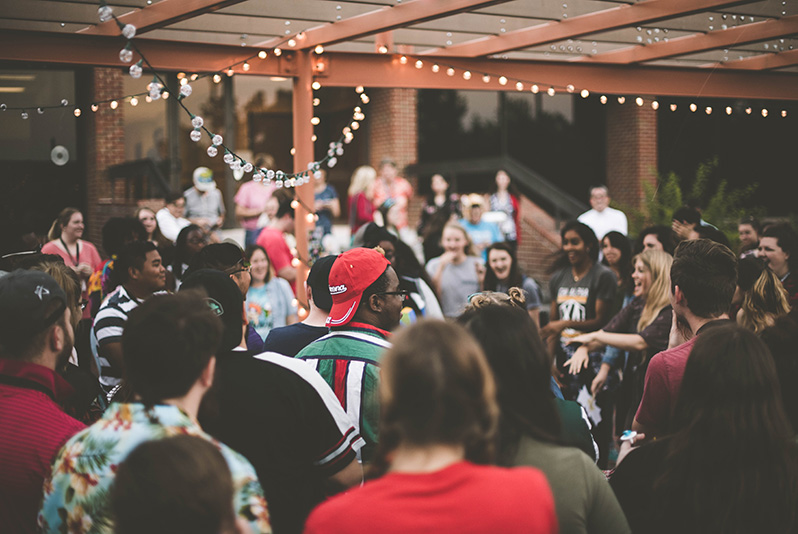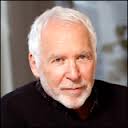The Moment for Community Has Arrived
by Peter Block
A World Divided
Isolation is on the rise in our neighborhoods, institutions, cities, and in the world at large. The extremism and rigid ideology that flood all forms of public conversation are painful to witness and, to my mind, partial determinants of the violence that surrounds us. While social media promises to connect us, we still sit in Starbucks, walk down the street, and dine together staring at a flat screen. To restore our connectedness, we need to see clearly the isolation we are part of and begin to connect with and care for the well-being of the people around us.
Community building now seems to be an idea whose time has come. Its promise, though, is not well implemented. When it comes to gatherings, we do not act on what we know. At best we convene a social event, a block party, a reception, with food and music, and then most often huddle with like-minded people. Strangers remain strangers.
Creating Community
Dominant practices for engaging people, civically and organizationally, remain essentially ineffective. We still hold town meetings where one person talks and the rest ask vetted questions. City councils still sit on a platform with microphones and give citizens two minutes each to make their point. Professional conferences continue to be designed around inspiring keynote speeches and content-filled workshops to attract attendees. Presenting data in this way becomes a weak substitute for learning and transformation.
Still, interest in and grassroots practices in restoring community are increasing. This goes under the name of civic engagement, community building, organizational outreach, community relations, democracy projects, cooperative movements—all caring for the well-being of the whole.
Institutional awareness of the need for community is also growing. The not-so-obvious insight is that restoring community is increasingly seen as a productive organizational strategy to address business and civic concerns. What is important, and new, is that our traditional institutions, such as the church, are moving their attention and faith efforts outside their buildings and into their neighborhoods. Places of congregation are now in taverns, common houses, and storefronts.
Community in Action
Examples of those working toward creating community are abundant. Rabbis and pastors are leading the community-building movement in forms such as the Parish Collective based in Seattle and the Hive and Just Love in Cincinnati. The city government of Edmonton, Alberta, Canada, is sponsoring an Abundant Community Initiative which supports neighbors in identifying and gathering together the gifts of people on their block in projects aimed at producing more safety and revitalization. The Rochester Health Foundation has an eight-year strategy to reduce major illnesses in the community by organizing residents in vulnerable neighborhoods to make their place better, addressing concerns that would seem to have nothing to do with major diseases. They are investing in projects like neighborhood beautification, community gardens, fixing up distressed buildings, pushing drug traffic out. What does having residents care for their six-block area have to do with fighting cancer, diabetes, heart disease? There is evidence that some of the major determinants of disease are social, relational, communal.
When we have serious structural innovation in community engagement on the part of the church, the government, and the foundations, something important is going on.
Moving toward Belonging and Inclusion
Even when social pioneers do amazing work and manage to bring people together to make a place better, their work often remains an untold story. It competes poorly for all the attention drawn to crisis. Building trust, relationships, and social capital as a strategy for improving health, well-being, safety, and raising productive children does not make a lot of money for anybody and does not feed our society’s appetite for drama and celebrity. Who can compete with a cat doing back flips? What works in the world, as opposed to what is failing in the world, still gets treated as a human-interest story.
All these developments keep telling us that building community and belonging is going to be our most powerful strategy for ending the displacement and isolation that plague so many corners of our world. As a bonus, building community is also a powerful strategy to create resilient organizations and a healthier planet. The strategy is to put the capacity to do this in the forefront, to give it a more critical role than the usual priorities of designing programs, making blueprints, getting funding, and trying all the things that institutions do.
Building community and belonging is going to be our most powerful strategy for ending the displacement and isolation that plague so many corners of our world.
The challenge in this enterprise is that building community seems too simple. If you choose to shift towards a context of possibility instead of staying with a context of deficiency, if connected people are the first order of business, you will discover how simple it is to end people’s isolation. When you reduce people’s isolation, they learn that they are not crazy and there is nothing wrong with them. And then can imagine together a future distinct from the past.
Re-posted from the BK Blog of Berrett-Koehler Publishers.
Photo by Gades Photography on Unsplash





